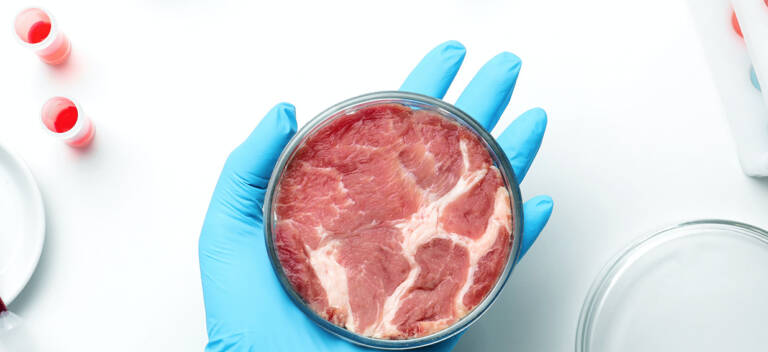Sensational: test-tube meat produces 25 times more CO2 than farmed meat

A shocking new study seems to suggest that lab-raised meat (aka Animal Cell-Based Meat, or ACBM) may be far worse for the environment than traditional livestock. The study estimates that if current techniques were scaled up to supply the market, they could produce four to 25 times more CO2 than raising and slaughtering animals. The article was published in the Journal Bioxriv.
“Billions of dollars of investment has been specifically targeted at the [ACBM] industry with the argument that this product will be greener than beef,” the study explains. It's true that lab-raised meat eliminates the need for land, water, and antibiotics in raising livestock. However, researchers have found that the hype over cultured meat is based on flawed analyzes of carbon emissions.
Increased CO2 levels are associated with fossil fuels needed during purification processes that provide nutrition to cultured cells. Endotoxin elimination is critical in creating cultured meat, as bacteria in the environment release these toxins. Even a small amount of these toxins in the culture medium can stop cells from reproducing.
“ Animal cell culture has traditionally been done with culture medium components that have been refined to remove/reduce endotoxins ,” write the study authors. “ The use of these refining methods contributes significantly to the economic and environmental costs associated with pharmaceuticals, as they are energy and resource intensive ,” they added.
Researchers estimate that each kilogram of ACBM produces 246 kg to 1,508 kg of carbon dioxide emissions. Based on these figures, they calculated that the global warming potential of cultured meat is four to 25 times higher than that of naturally raised beef.
Another problem, according to the study, is that several ACBM climate impact reports rely on unrealistic technologies that are either non-existent or unlikely to work. One example is a study that calculated the carbon emissions of ACBM production through the use of cyanobacterial hydrolyzate as a feedstock for cells. However, the researchers in the current analysis point out that this is not a current or feasible technology or feedstock for animal cell proliferation.
“The short-term environmental impact of ACBM production is likely to be orders of magnitude greater than that of median beef production if highly refined culture medium is used for ACBM production,” concludes the study.
The authors propose a solution, suggesting the creation of cell lines capable of resisting higher amounts of endotoxins. This would reduce the need for energy-intensive purification procedures and ultimately the environmental impact of lab-grown meat. But for now these cells do not exist and test tube meat is still very far in the future. Furthermore, how healthy will a meat resistant to endotoxins be for humans?

Thanks to our Telegram channel you can stay updated on the publication of new articles from Economic Scenarios.
The sensational article: test-tube meat produces 25 times more CO2 than farmed meat comes from Scenari Economici .
This is a machine translation of a post published on Scenari Economici at the URL https://scenarieconomici.it/clamoroso-la-carne-in-provetta-produce-25-volte-piu-co2-di-quella-da-allevamento/ on Sun, 14 May 2023 19:14:01 +0000.
